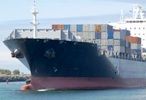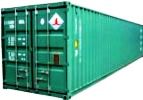Mubychem Group, established in 1976, is the pioneer manufacturer of Sodium Starch Glycolate, Pharmaceutical, Fragrance & Flavor chemicals in India. Mubychem Group has several manufacturing facilities spread across Gujarat and Mumbai India and world wide contacts and toll manufacturers. We are exporting globally to countries like USA, Europe, UAE, South Africa, Tanzania, Kenya, Egypt, Nigeria, Uganda, Turkey, Mexico, Brazil, Chile, Argentina, Dubai, Indonesia, Spain etc. |
|
The participating units have one or more accreditations like FDA - GMP approval; ISO-9001 Certified; "REACH" registered; ISO-22000; Kosher Certified; Halal Certified; HACCP. We offer Pure & IP BP USP FCC Food Grade ACS AR Analytical Reagent Grades of Chemicals |
|





Sodium Starch Glycolate BP Ph Eur USP NF Grade Manufacturers
MSDS of Sodium Starch Glycolate BP USP NF Manufacturers
Sodium Starch Glycolate
Technical & Pure, Type A, Type B, Type C
CAS Number 9063-38-1, IP BP Ph. Eur. USP ACS AR LR FCC Food Grades

Sodium Starch Glycolate BP (Type A) Grade Specifications
DEFINITION
Sodium salt of a cross-linked partly O-carboxymethylated potato starch.
Content
2.8 per cent to 4.2 per cent of Na (A 22.99) (substance washed with ethanol (80 per cent V/V) and dried).
CHARACTERS
Appearance
White or almost white, fine, free-flowing powder, very hygroscopic.
Solubility
Practically insoluble in methylene chloride. It gives a translucent suspension in water.
Examined under a microscope it is seen to consist of: granules, irregularly shaped, ovoid or pear-shaped, 30-100 µm in size, or rounded, 10-35 µm in size; compound granules consisting of 2-4 components occur occasionally; the granules have an eccentric hilum and clearly visible concentric striations; between crossed nicol prisms, the granules show a distinct black cross intersecting at the hilum; small crystals are visible at the surface of the granules. The granules show considerable swelling in contact with water.
IDENTIFICATION
A. pH (see Tests).
B. Prepare with shaking and without heating a mixture of 4.0 g of the substance to be examined and 20 ml of carbon dioxide-free water. The mixture has the appearance of a gel. Add 100 ml of carbon dioxide-free water and shake. A suspension forms that settles after standing.
C. To an acidified solution, add iodinated potassium iodide solution. The solution becomes blue or violet.
D. Solution S2 (see Tests) gives reaction of sodium.
TESTS
Solution S1
Centrifuge the suspension obtained in identification test B at 2500 g for 10 min. Collect carefully the supernatant liquid.
Solution S2
Place 2.5 g in a silica or platinum crucible and add 2 ml of a 500 g/l solution of sulphuric acid. Heat on a water-bath, then cautiously over a naked flame, raising the temperature progressively, then incinerate in a muffle furnace at 600 ± 25 °C. Continue heating until all black particles have disappeared. Allow to cool, add a few drops of dilute sulphuric acid, heat and incinerate as above. Allow to cool, add a few drops of ammonium carbonate solution, evaporate to dryness and incinerate cautiously. Allow to cool and dissolve the residue in 50 ml of water.
Appearance of solution S1
Solution S1 is clear and colourless.
pH
5.5 to 7.5. Disperse 1.0 g in 30 ml of water.
Sodium glycolate
Maximum 2.0 per cent. Carry out the test protected from light.
Sodium chloride
Maximum 7.0 per cent.
Iron
Maximum 20 ppm determined on 10 ml of solution S2.
Heavy metals
Maximum 20 ppm. 1.0 g complies with test D. Prepare the reference solution using 2 ml of lead standard solution (10 ppm Pb).
Loss on drying
Maximum 10.0 per cent, determined on 1.000 g by drying in an oven at 130 °C for 1.5 h.
Microbial contamination
It complies with the test for Escherichia coli and Salmonella.
Sodium Starch Glycolate BP (Type B) Grade Specifications
DEFINITION
Sodium salt of a cross-linked partly O-carboxymethylated potato starch.
Content
2.0 per cent to 3.4 per cent of Na (A 22.99) (substance washed with ethanol (80 per cent V/V) and dried).
CHARACTERS
Appearance
White or almost white, fine, free-flowing powder, very hygroscopic.
Solubility
Practically insoluble in methylene chloride. It gives a translucent suspension in water.
Examined under a microscope it is seen to consist of: granules, irregularly shaped, ovoid or pear shaped, 30-100 µm in size, or rounded, 10-35 µm in size; compound granules consisting of 2-4 components occur occasionally; the granules have an eccentric hilum and clearly visible concentric striations; between crossed nicol prisms, the granules show a distinct black cross intersecting at the hilum; small crystals are visible at the surface of the granules. The granules show considerable swelling in contact with water.
IDENTIFICATION
A. pH (see Tests).
B. Prepare with shaking and without heating a mixture of 4.0 g of the substance to be examined and 20 ml of carbon dioxide-free water. The mixture has the appearance of a gel. Add 100 ml of carbon dioxide-free water and shake. A suspension forms that settles after standing.
C. To an acidified solution, add iodinated potassium iodide solution. The solution becomes blue or violet.
D. Solution S2 (see Tests) gives reaction of sodium.
TESTS
Solution S1
Centrifuge the suspension obtained in identification test B at 2500 g for 10 min. Collect carefully the supernatant liquid.
Solution S2
Place 2.5 g in a silica or platinum crucible and add 2 ml of a 500 g/l solution of sulphuric acid. Heat on a water-bath, then cautiously over a naked flame, raising the temperature progressively, and then incinerate in a muffle furnace at 600 ± 25 °C. Continue heating until all black particles have disappeared. Allow to cool, add a few drops of dilute sulphuric acid and heat and incinerate as above. Allow to cool, add a few drops of ammonium carbonate solution, evaporate to dryness and incinerate cautiously. Allow to cool and dissolve the residue in 50 ml of water. Appearance of solution S1
Appearance of solution S1
Solution S1 is clear and colourless.
pH
3.0 to 5.0. Disperse 1.0 g in 30 ml of water.
Sodium glycolate
Maximum 2.0 per cent. Carry out the test protected from light.
Sodium chloride
Maximum 7.0 per cent.
Iron
Maximum 20 ppm determined on 10 ml of solution S2.
Heavy metals
Maximum 20 ppm.
Loss on drying
Maximum 10.0 per cent, determined on 1.000 g by drying in an oven at 130 °C for 1.5 h.
Microbial contamination
It complies with the test for Escherichia coli and Salmonella.
Sodium Starch Glycolate BP (Type C) Grade Specifications
DEFINITION
Sodium starch glycolate (type C) is the sodium salt of a cross-linked by physical dehydration, partly O-carboxymethylated starch. It contains not less than 2.8 per cent and not more than 5.0 per cent of Na (A 22.99), calculated with reference to the substance washed with alcohol (80 per cent V/V) and dried.
CHARACTERS
A white or almost white, fine, free-flowing powder, very hygroscopic, soluble in water, practically insoluble inmethylene chloride. It gives a translucent gel-like product in water.
Examined under a microscope it is seen to consist of granules, irregularly shaped, ovoid or pear-shaped, 30 µm to 100 µm in size, or rounded, 10 µm to 35 µm in size; compound granules consisting of two to four components occur occasionally; the granules have an eccentric hilum and clearly visible concentric striations; between crossed nicol prisms, the granules show a distinct black cross intersecting at the hilum; small crystals are visible at the surface of the granules. The granules show considerable swelling in contact with water.
IDENTIFICATION
A. It complies with the test for pH (see Tests).
B. Mix with shaking and without heating 4.0 g and 20 ml of carbon dioxide-free water. The mixture has the appearance of a gel. Add 100 ml of carbon dioxide-free water and shake: the gel remains stable (difference from types A and B). Keep the gel for the tests for appearance of gel and pH.
C. To 5 ml of the gel obtained in identification test B add 0.05 ml of iodine solution. A dark blue colour is produced.
D. Solution S (see Tests) gives reaction of sodium.
TESTS
Solution S
Place 2.5 g in a silica or platinum crucible and add 2 ml of a 500 g/l solution of sulphuric acid. Heat on a water-bath, then cautiously over a naked flame, raising the temperature progressively, and then incinerate in a muffle furnace at 600 ± 25C. Continue heating until all black particles have disappeared. Allow to cool, add a few drops of sulphuric acid and heat and incinerate as described above. Allow to cool, add a few drops of ammonium carbonate solution, evaporate to dryness and incinerate cautiously. Allow to cool and dissolve the residue in 50 ml of water.
Appearance of gel
The gel prepared under identification test B is colourless.
pH
The pH of the gel prepared under identification test B is 5.5 to 7.5.
Sodium glycolate
Carry out the test protected from light. (2.0 per cent).
Sodium chloride
Not more than 1 per cent.
Iron
10 ml of solution S complies with the limit test for iron (20 ppm).
Heavy metals
1.0 g complies with limit test D for heavy metals (20 ppm).
Loss on drying
Not more than 7.0 per cent, determined on 1.000 g by drying in an oven at 100C to 105C for 4 h.
Microbial contamination
It complies with the test for Escherichia coli and Salmonell).
Sodium Starch Glycolate USP NF Grade Specifications
Sodium Starch Glycolate USP NF
Starch carboxymethyl ether, sodium salt.
Sodium Starch Glycolate is the sodium salt of a carboxymethyl ether of starch or of a cross-linked carboxymethyl ether of starch. It may contain not more than 7.0 percent of Sodium Chloride. The pH and assay requirements for Type A and Type B are set forth in the accompanying table.
pH | % Sodium, combined as sodium starch glycolate | |
Type | Min. ----- Max. | Min ----- Max |
A | 5.5 ------- 7.5 | 2.8 ------- 4.2 |
B | 3.0 ------- 5.0 | 2.0 ------- 3.4 |
Identification—
A: Infrared Absorption 197K.
B: A slightly acidified solution of it is colored blue to violet by the addition of iodine and potassium iodide TS 1.
C: To a 2-mL portion of the solution prepared for the test for Limit of iron, add 4 mL of Potassium pyroantimonate solution. If necessary, rub the inside of the test tube with a glass rod. A white, crystalline precipitate is formed.
Potassium pyroantimonate solution—To 2 g of potassium pyroantimonate add 100 mL of water. Boil the solution for about 5 minutes, cool quickly, and add 10 mL of a solution of potassium hydroxide (3 in 20). Allow to stand for 24 hours, and filter.
D: Sodium Starch Glycolate imparts an intense yellow color to a non-luminous flame.
Microbial limits — It meets the requirements of the tests for absence of Salmonella species and Escherichia coli.
pH— Disperse 1 g in 30 mL of water. The pH of the resulting suspension is either between 5.5 and 7.5 for Type A or between 3.0 and 5.0 for Type B.
Loss on drying— Dry it at 130 for 90 minutes: it loses not more than 10.0% of its weight.
Heavy metals: 0.002%.
Limit of iron— (0.002%).
Limit of sodium chloride— To pass the test.
Limit of sodium glycolate— (2.0%).
CAS Number 9063-38-1, Sodium Starch Glycolate BP USP NF Manufacturers:
MUBYCHEM GROUP
CHINCHBUNDER, MUMBAI 400009, INDIA
TEL: (OFFICE) 91-22-23774610, 91-22- 23723564. 91-22-23728264
e-mail: anmol@pcmenergy.com

Copyright and Usual Disclaimer is Applicable.

Global or International Sodium Starch Glycolate Suppliers, Exporters, Importers, Manufacturers
If I give you “My Word” Nobody can undo it.
If I sign an “Agreement” my Lawyer will undo it
Perfection is made up of small thing but it is not small.
25-Jun-2025